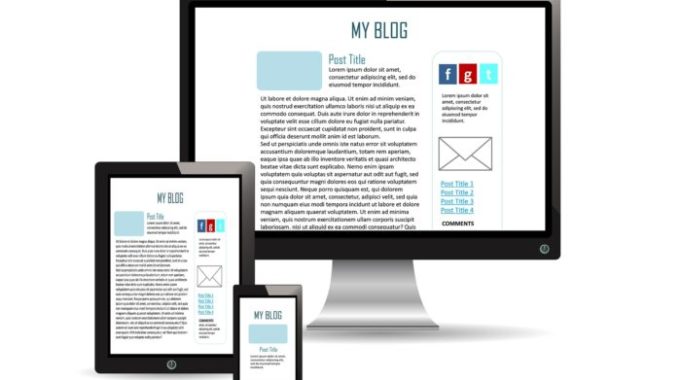
How To Build A Lead Magnet With A Powerful Pull
Let’s talk about magnets.
But not the ones you might have glued to your fridge or sitting in your stereo speakers.
We’re talking about lead magnets. And while they’re not magnetic in the physical sense, the right one can have an irresistible pull for potential customers.
(Though just like a weak magnet, the wrong lead magnet lacks any strength to get prospects to look your way.)
Put another way, your lead magnet is often the first chance you get to “strut your stuff” in front of potential customers. Sure, newcomers may have skimmed your blogs or watched a video or two, but a lead magnet is different. It might mean they have to…
- Hand over their details (never underestimate the value someone puts on their email address)
- Spend significant time consuming your lead magnet
- Spend time doing something with your lead magnet
And because this involves such a commitment on the prospect’s part, get it wrong and you may not have a second chance to convince them.
So, how do you make sure your lead magnet is as strong as a neodymium magnet?
In this case, five specific questions can give you the confidence and outline to produce a pretty darned good lead magnet that’s right for you.
1. Why Should I Have a Lead Magnet?
If you read through the intro thinking “great, fantastic, but I’m not in the sort of business that needs a lead magnet”… well, think again.
According to some, content marketing generates around THREE times the leads as traditional marketing. And since lead magnets are often the embodiment of content marketing, that’s a lot of leads you’re leaving on the table if you don’t use it.
Of course, lead generation is the obvious #1 reason, but it’s not the only one. If you create your lead magnet in a certain way, you might also enjoy these benefits too.
Build authority: One of the best ways to convince people you’re the go-to expert is to show them that you’re the go-to expert. A lead magnet is the perfect vehicle for doing that.
KLT: Use a lead magnet to follow the “Know, Like, Trust” model (or KLT) so often talked about today. Create a lead magnet that educates, entertains, or even just empathizes with leads and you start building a relationship that’s eventually win/win.
Launch a product: If you’re launching a new product, lead magnets can play a fantastic supporting role that helps the launch get exposure, drum up interest, and lets potential buyers sample the product.
2. What Makes a Good Lead Magnet?
So far, we’ve talked a lot about why lead magnets make sense for business.
But in order for them to work, they also have to make sense for your leads. That’s something too many businesses forget, releasing a report or guide that sounds fantastic to them but leaves readers unimpressed.
With that in mind, what makes a good lead magnet for your customers-to-be? Well, try these:
Relevant for readers: For people to get anything from your lead magnet, they have to want to look at it, which means it has to be relevant to THEM.
Solves a problem: One of the best ways to make your lead magnet relevant AND interesting is to position it as solving a problem (or satisfying a desire). People typically buy things for these two reasons. They look to your business to help them do that. So let your lead magnet do the solving!
Easy to consume: Sure, a 500-page guide or 6-hour video series might look impressive, but it’s probably more than most customers are willing to bite off. They’re much less likely to get far into the lead magnet, so they won’t get as much value from it.
A polished presentation: While not as important as the three above, first impressions still count. Yes, a scratchy Word doc jam-packed with good advice can still work wonders, but a professional-looking PDF with spiffy images is even more likely to catch interest and attention.
3. How do I Find the Right Lead Magnet Medium?
When I first started as a copywriter, I thought lead magnets only came in one form: the free report (or eBook). The truth is that lead magnets can come in all shapes and sizes. The format itself isn’t as important as their ability to get people to take a closer look at your business, or sometimes even buy from you.
Content is popular as a lead magnet because it’s easy to create. However, you’re not limited to just a free report or eBook. Here’s a list of lead magnet formats others have used to bring people in from the cold:
- Report
- eBook
- Infographic
- Consultation
- Quiz
- Demonstration
- Template or checklist
- Workbook
- Evaluation
- Discount or BOGO offer
- Coaching or strategy session
- Sample
- Physical products, such as DVDs or books
- Contest or competition
- Mini-course
- Trial
Ultimately, you should be thinking about what your customers are most likely to go for. Are they the sort to sit down and read page after page? Are they more likely to want some sort of human interaction? Or would they love to get their hands on some free product?
Here’s an example of a free physical book lead magnet. The Ask Method uses a free book (minus S&H) to show businesses a unique way to market… and get them interested in higher-priced offers.
This is a big question… but one that waaaaaay too many businesses ignore.
If your prospect is looking at your lead magnet, then it’s not quite “mission accomplished.” You’ve probably got their email and name, and the simple fact they’re looking at is either framing you as the expert or creating a relationship. But it doesn’t (and shouldn’t) just stop there.
Once they finish watching the video or reading the guide, give them a next step.
A lead magnet is just the starting point for building a relationship. Without a next step, that budding relationship can wither just when you could be watering it. If they loved your eBook, a simple next step asking to share it on social media means you’re striking while the iron’s hot.
Now, let me be clear: the next step doesn’t necessarily equal “buy my thing!” (though in the right circumstances, it might). It could be something small, like sharing the lead magnet on social media. It might be to take a look at more content related to the lead magnet. You might even ask them a question or two that helps you learn something new about them, so you can market more specifically to future leads.
5. How Do I Get My Lead Magnet to People?
So, you’ve got your lead magnet - in whatever form - ready to go. Now you’ve got to actually get people to notice it.
Obviously, the format (See Question 3) has an influence on how you spread the word. But to get you started, these are several popular channels to get people across your lead magnet.
Your email list: Yes, it’s the obvious place to start. No, your lead magnet doesn’t just have to bring new people through the door. A good lead magnet gives value and builds relationships not just with new prospects, but existing ones too. So, send it out to your people and encourage them to share.
Social media: Another fantastic starting point. If you’ve got any social media presence, posting your lead magnet is a must-do. The big benefit here is that sharing on these channels is much easier, and there’s even the possibility your lead magnet could go “viral” and drag in huge interest.
(I’m not sure you can deliberately create viral content, but if you want a try, here’s a pretty good article on the topic.)
Advertising: Want to extend your reach well beyond your business’ ecosystem? Advertising is a great option if you have the budget. Sure, it’s going to cost but done right, paid ads let you get in front of hundreds, thousands, or even millions who would have never otherwise seen your lead magnet.
Joint ventures: Another way to push beyond the boundaries of your business is to team up with another. Arrange a “quid pro quo” deal where they share your lead magnet to their email list and social media community while you do the same for them. This is a terrific option, especially if you can partner with a business who’s complementary to yours. For example, if you sell online fitness programs, a joint venture with a gym equipment store could be perfect.
Here’s another lead magnet example. BetterMe uses Google Ads to attract people into its quiz-based lead magnet.
Your Next Step
In Question 4, we talked about giving your prospects a next step. Well, now it’s time to give YOU a next step.
If you haven’t already, go back through the five questions and reflect on them. When you’ve found good answers for each one, you’ve got the plan for creating a lead magnet for your content marketing that holds a powerful, prospect-attracting pull.
| Dean Mackenzie is a direct response copywriter based in Brisbane, Australia. He writes top-shelf landing pages, emails, lead magnets, and sales pages for clients, especially in the health and fitness niches. He’s also fond of talking about himself in the third person. |



